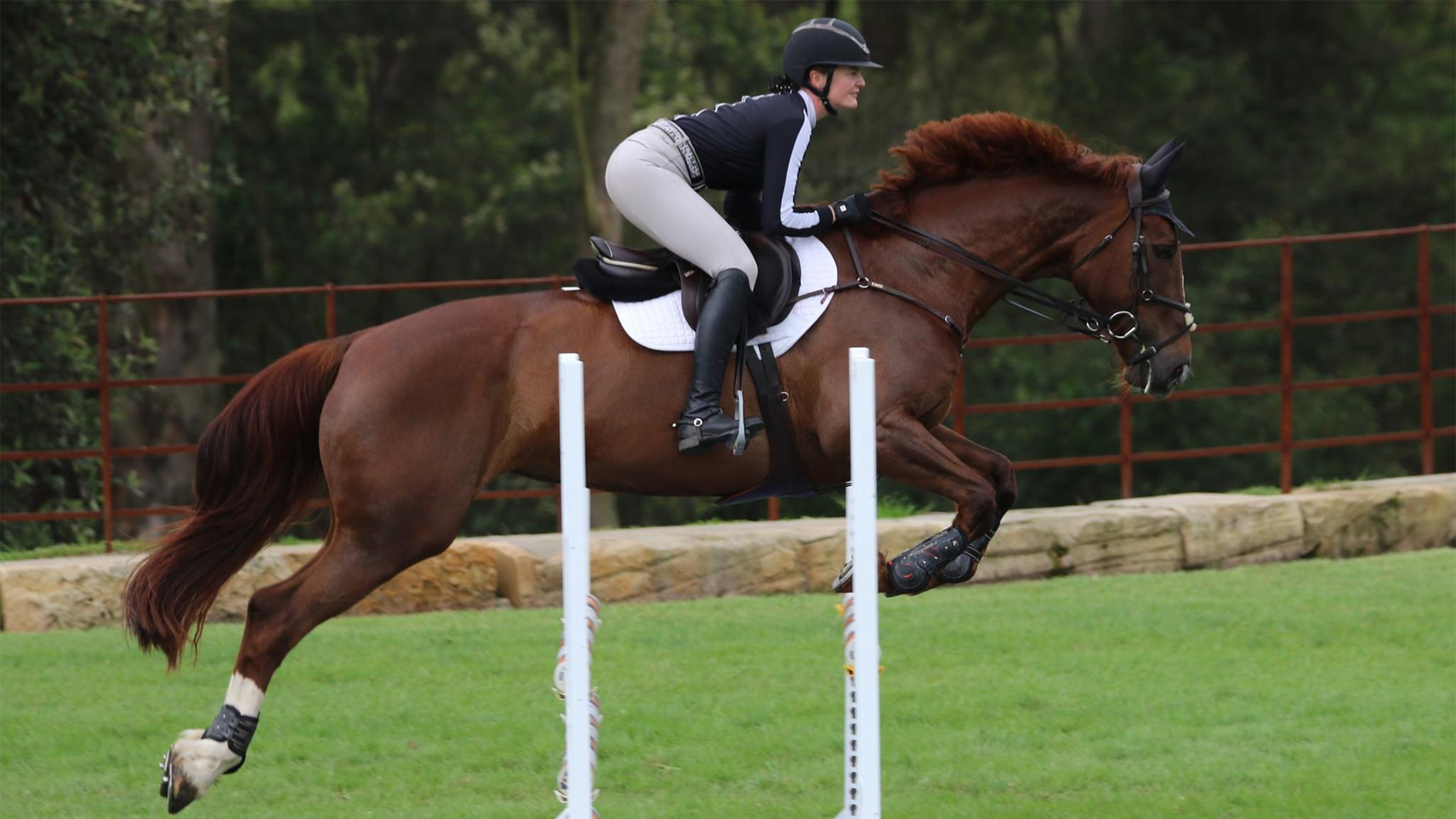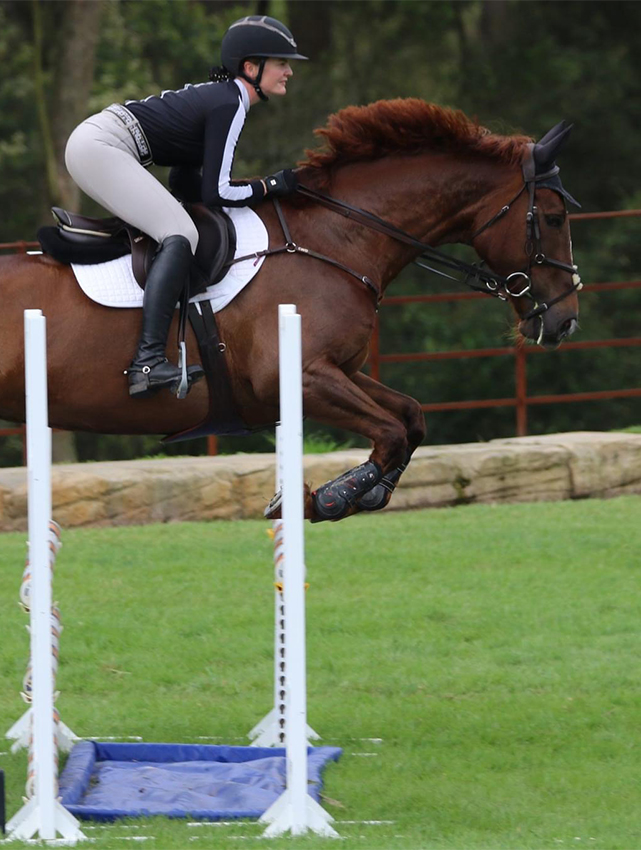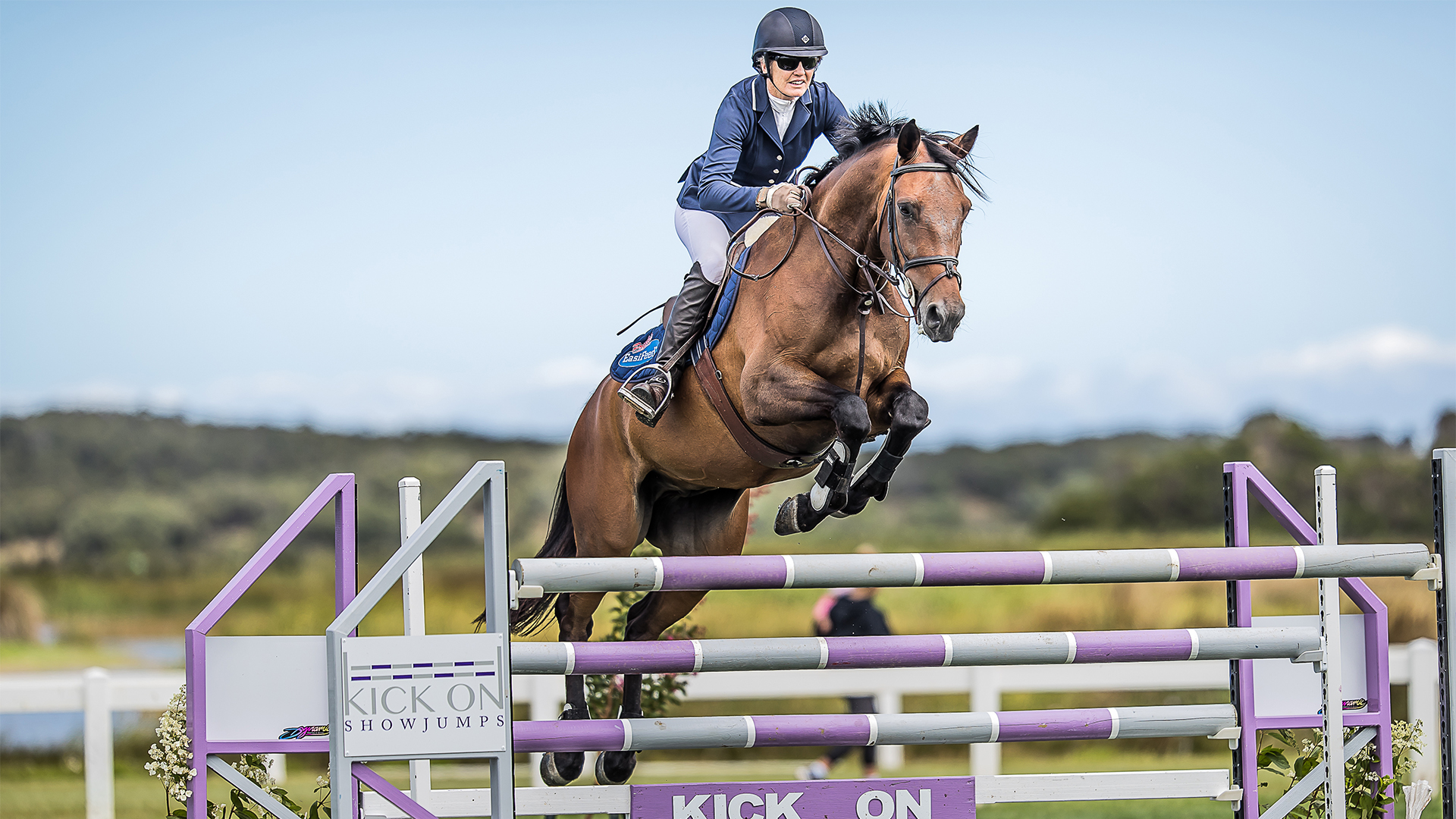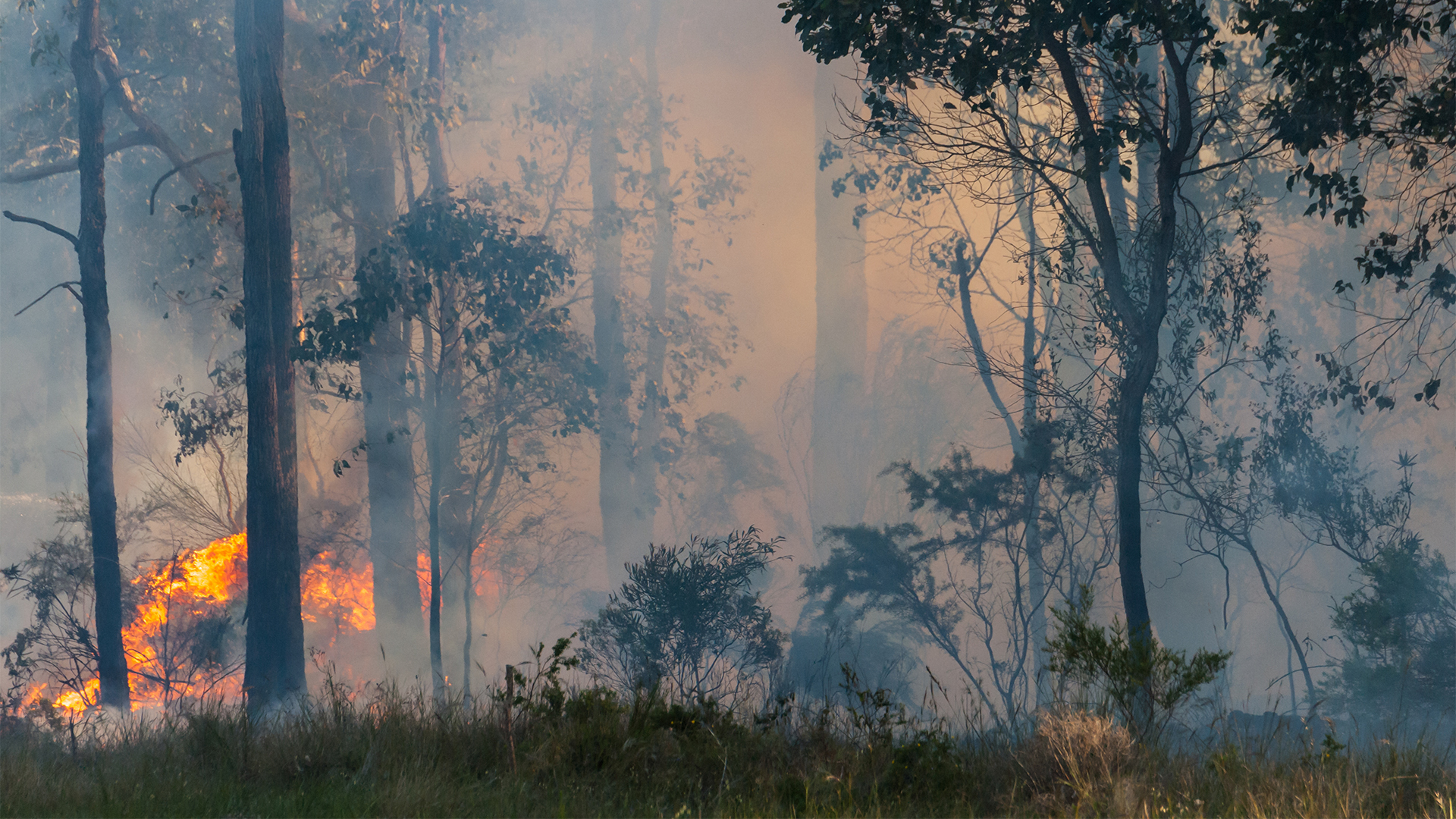The word “colic” sends shivers down the spine of horse owners the world over. Mild cases that resolve medically are met with enormous relief, while more complex cases – where owners must decide whether to operate or euthanise – are heart-wrenching.
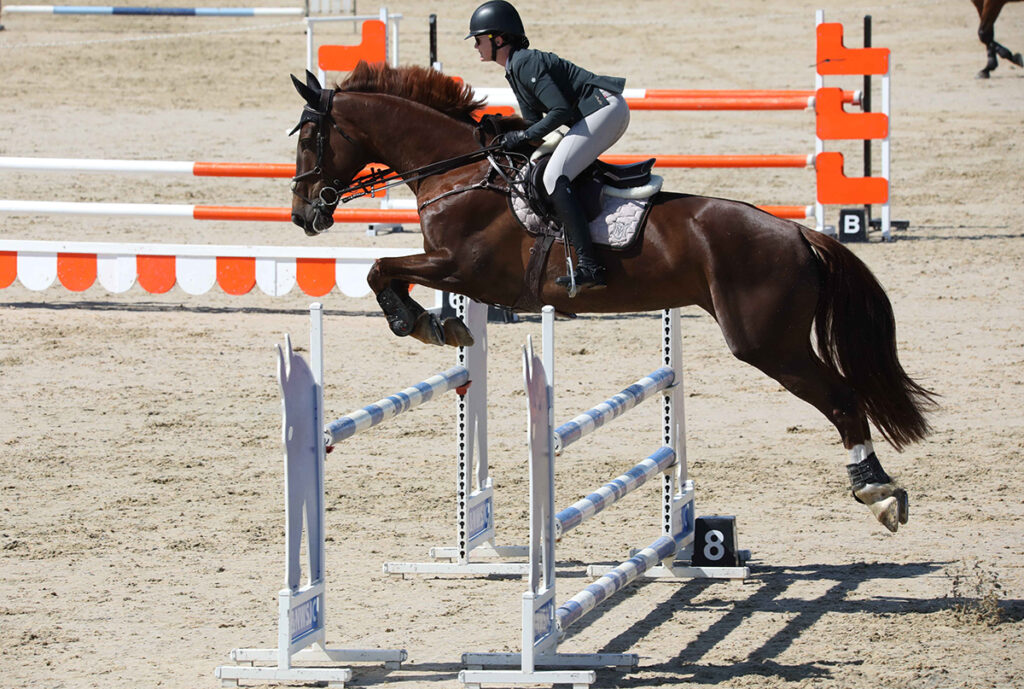
Amelia Coates and KPH Kallisto competing at Tamworth World Cup show. Image supplied.
For many horse owners, the risks, cost and extensive rehabilitation involved in colic surgery are prohibitive. A decision to operate must be made swiftly, as delaying surgery can result in further intestinal damage and a reduced survival rate. Faced with this decision, Amelia Coates chose to proceed with surgery and shares her insights into the steps and care taken to give her horse the best possible outcome on her long road to recovery.
Amelia was competing at the NNWSJC World Cup Show at Tamworth, NSW, in August 2023 with her beloved mare KPH Kallisto – a 2015 born, 17.2hh warmblood by Kannan – when colic first reared its ugly head.
“Kalli is my absolute dream,
a once-in-a-lifetime horse.”
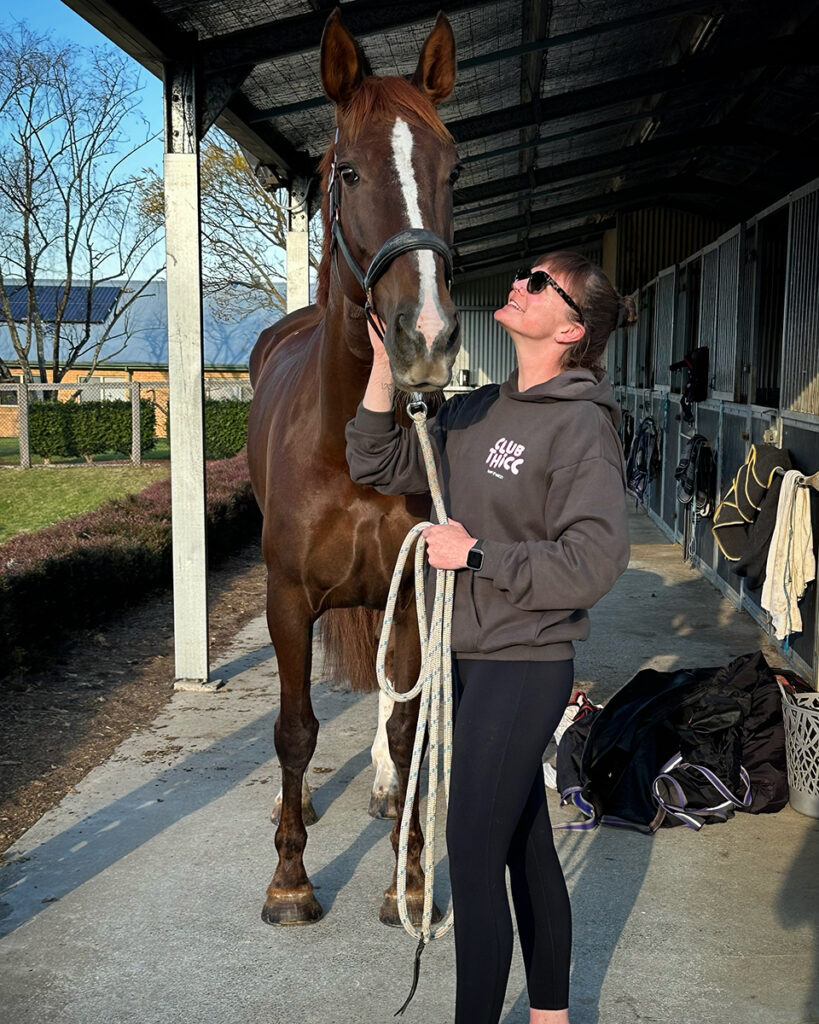
Amelia and Kalli, home from Scone after the first colic episode. Image supplied.
Unfortunately, a second colic episode occurred four months later. Amelia, who lives on the NSW Central Coast, took Kalli to Randwick Equine Centre (REC), where the colic was once again resolved medically; this involved withholding food and water, an IV drip, painkillers and monitoring. All was well for several months, until April 2024 when a third colic episode saw Kalli back at REC.
“I received the phone call no one wants to hear at 5pm on a Friday evening explaining she was going downhill, and that we need to decide whether or not to operate,” Amelia explains. “With support from family and my coach, we decided to proceed with surgery.
“Kalli’s diagnosis was a ‘simple’ right dorsal displacement,” Amelia continues. “They can’t 100 per cent confirm a displacement without opening them up, so it becomes part of a differential diagnosis. They can usually feel something’s not quite right on the rectal exams, but it’s hard to be sure, especially on such a big horse.
“She was opened up, had the colon emptied and put back into place, and didn’t need to have any bowel resected. Unfortunately, there’s no definitive knowledge as to what causes this type of colic. Apparently it’s more common in big-barrelled horses where there is lots of room for the organs to move,” says Amelia, adding: “Back when Kalli had her second episode in December 2023, I asked them to do an abdominal X-ray because I was concerned about the prospect of an enterolith [intestinal stones that form within the colon and can obstruct the intestine], which could have been another potential diagnosis.”
LATE-NIGHT SURGERY
Kalli’s surgery took place late on the night that she arrived at Randwick, and she stayed at REC for eight days after surgery for close monitoring.
“I drove down to Randwick every day while she was in there. I know it’s not possible for everyone to do that, but the vets and nurses said she was always happier when I was around,” Amelia says. “It also meant that once she was off the IV, I could take her out for a little grass pick while I was visiting. The staff look after them exceptionally well, but it can be so busy that I think they sometimes appreciate it if you’re able to go down and get the horse out a bit for them.”
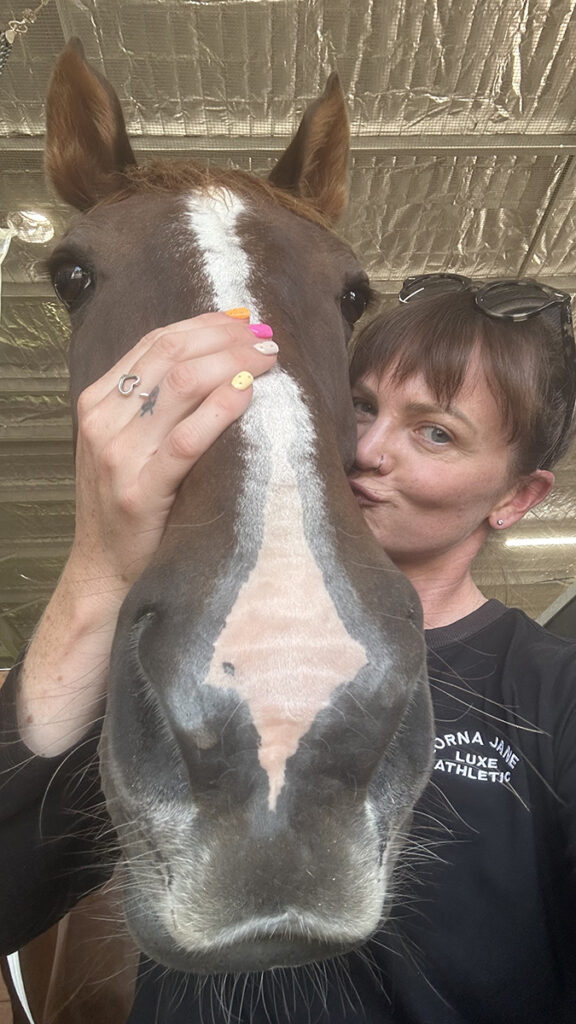
Amelia visiting Kalli post-surgery at REC. Image supplied.
An extremely diligent horse owner, Amelia was focused from the start of Kalli’s recovery process on ensuring every aspect of her care was optimised, thereby facilitating the best outcome possible.
“While she was recovering at Randwick I got in touch with Dr Jen Stewart from Jenquine, an equine veterinarian and nutritionist. Jen was incredibly accommodating and responsive to all my questions and concerns and we slowly introduced a complete dietary overhaul. The focus was on maintaining good gut health, keeping her eating constantly and having a low-sugar, high-fibre diet while making sure she got all the necessary vitamins and minerals,” Amelia explains. “As with any feed changes, we had to introduce everything slowly. I’m lucky to work from home and keep the horses at home, so I have broken her feeding up into four hard feeds a day along with two servings of hay.
“I drove myself crazy googling ‘colic surgery recovery’ daily, trawling through different articles and reading so much information – which was sometimes contradictory,” Amelia says. “In total, including her time at REC, Kalli had four weeks of box rest. While on box rest I would take her for a 10-minute grass pick four times a day, and I let her move around a little bit. This helps prevent adhesions, but they cannot have too much movement as this carries the risk of the incision not healing or developing a hernia.”
Two weeks after surgery, Kalli’s veterinarian Hayley Land from REC came to take staples out and check on the wound, returning again at four weeks post-surgery, at which point it was confirmed that Kalli could move from her stable into a small yard or paddock.
“It was at this time that I also got in touch with the equine physiotherapists from Equimotion,” Amelia recalls. “A 2019 article from the Journal of Equine Veterinary Science on ‘The Effect of Core Abdominal Muscle Rehabilitation Exercises on Return to Training and Performance in Horses After Colic Surgery’ suggests that if you can start doing core rehab from four weeks post-surgery, the horses return to training faster and with improved performance.”
“As with any feed changes, we had
to introduce everything slowly.”
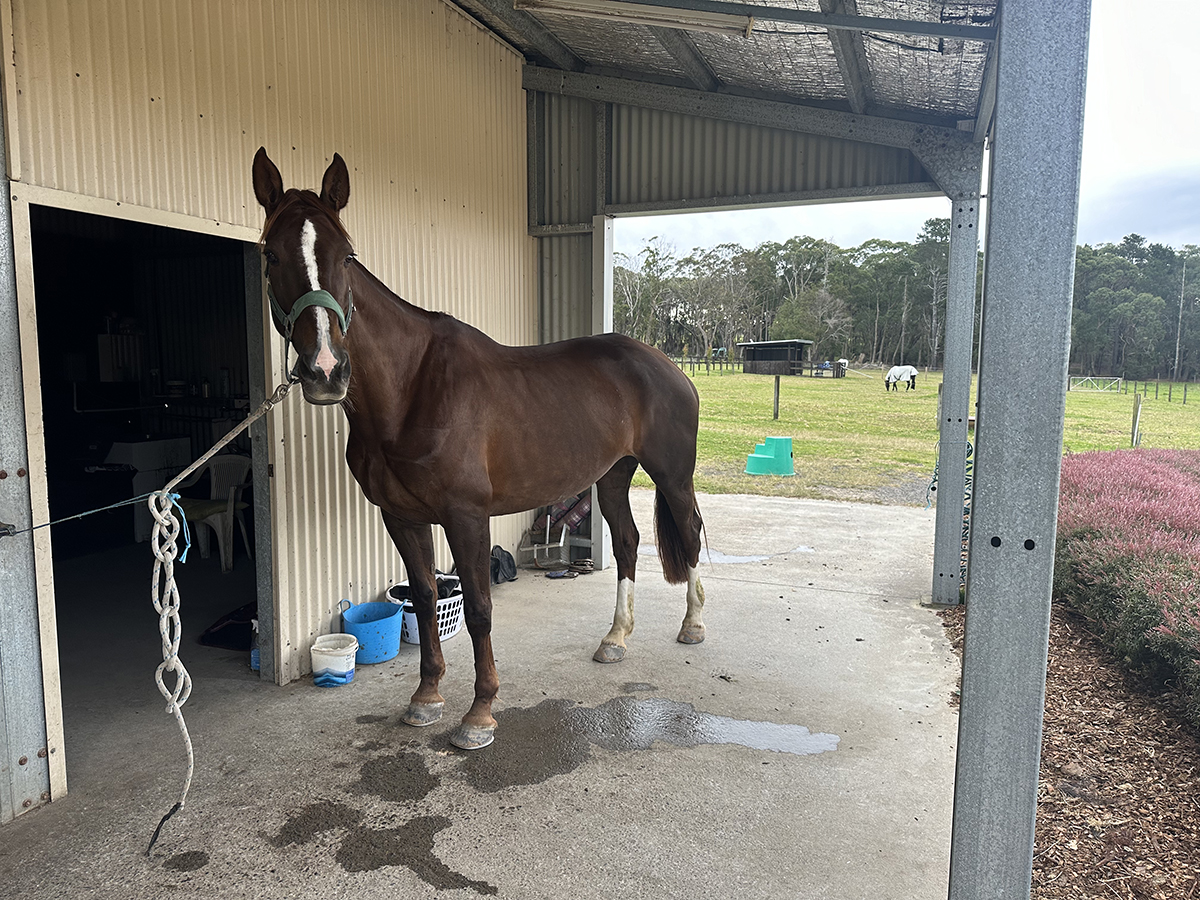
Seven weeks post-surgery. Image supplied.
Under the guidance of Kristin Dean from Equimotion, Amelia started introducing active walking in-hand and core exercises. Starting with 10-minute sessions of in-hand walking, she increased them by 5 minutes every week, while core exercises included active carrot stretches and backing up in-hand. Walks in-hand gradually increased in difficulty, with the introduction of pole work.
“Kristin came back at the eight-week mark to update our exercise regime. We introduced the use of an Equiband at this point as well, to help with abdominal activation, and I was slowly able to start introducing trotting in-hand and on the lunge,” Amelia explains. “Kristin was incredible and tolerant, responding to any questions or concerns I had. The Equimotion team have a great app so you can easily follow your exercise program and also log the exercises when you’ve done them.”
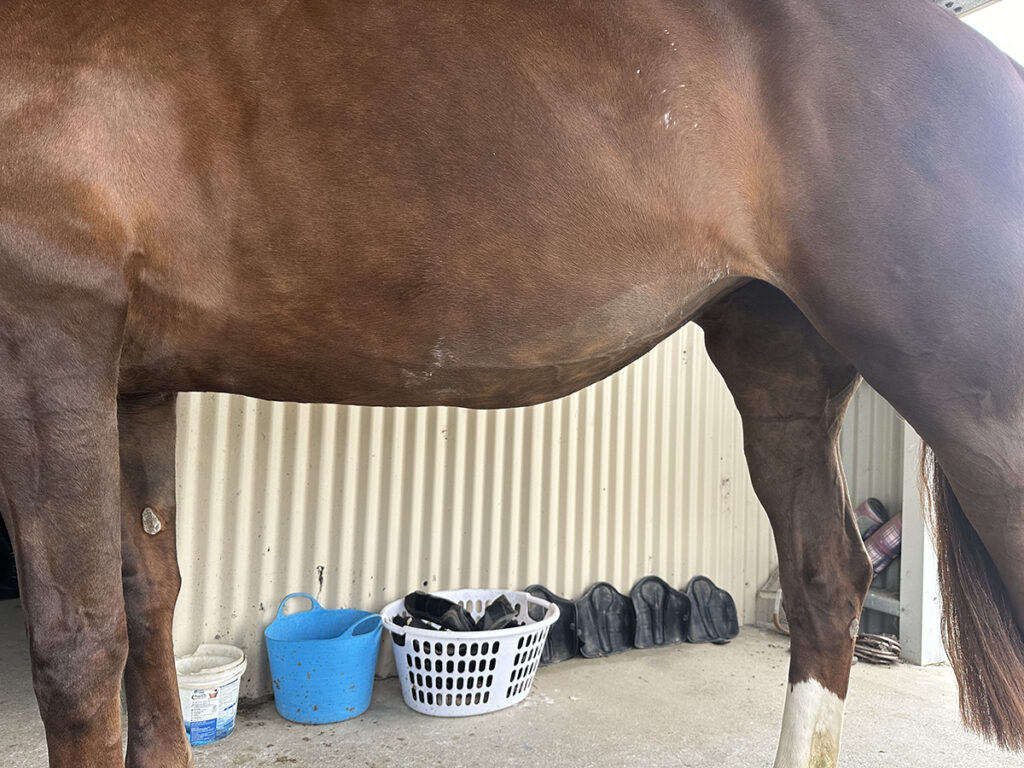
Healing nicely seven weeks post-surgery. Image supplied.
FIRST RIDE BACK
Kalli’s recovery was progressing very well and at 10 weeks post-surgery, Amelia was able to ride Kalli for the first time. After two weeks of walking under saddle, trotting commenced at the 12-week mark and from this point on, work slowly and steadily increased to include pole work. At 14 weeks post-surgery, Kalli was able to start some canter work, and at 19 weeks the pair were able to enjoy some small jumps – a rewarding and exciting milestone!
“We have just passed seven months post-surgery and recently attended our first show at Stonewall Equestrian, managing to come home with a fourth place in our last class for the weekend,” Amelia enthuses.
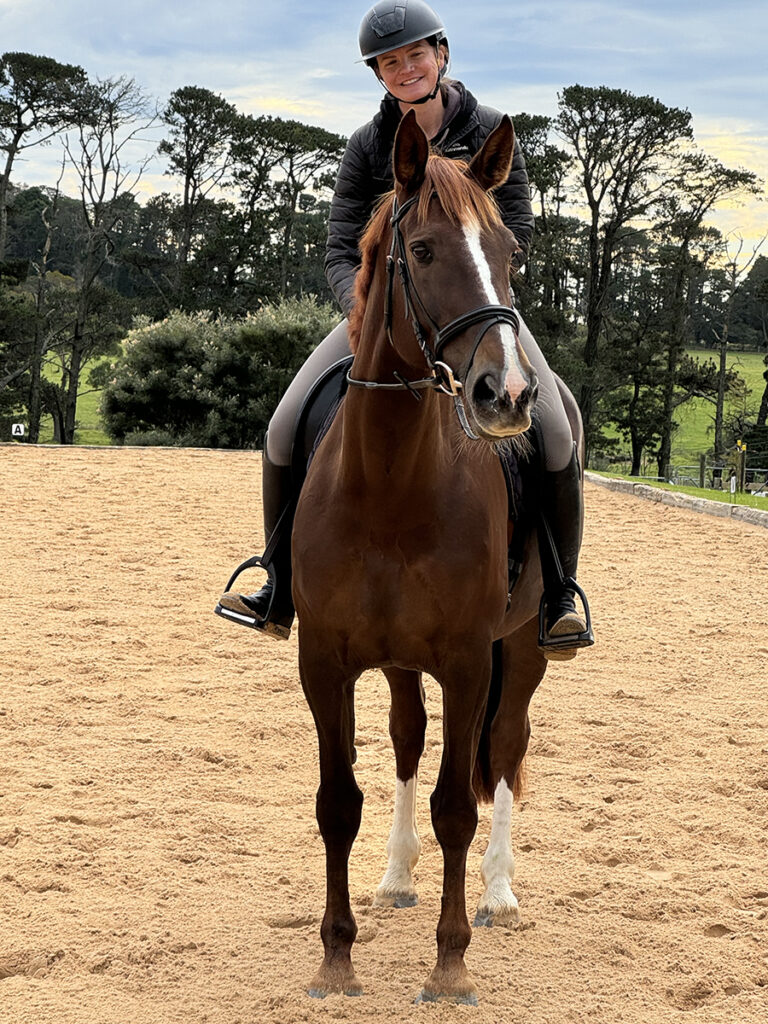
Kalli’s first ride post-surgery. Image supplied.
“I’m really excited to get back
in the ring with Kalli in 2025!”
Amelia and APH Kallisto’s colic journey is a success story involving skilled professionals, a diligent owner, a holistic approach to recovery and rehabilitation, and no unforeseen curveballs. Horses’ chances of surviving colic surgery have significantly improved in recent decades, however a percentage do succumb to the risks associated with anaesthesia, toxins released from the intestine, or other unexpected complications that can arise during the surgery or recovery process.
Looking to the future, Amelia is positive and appreciative, while remaining hypervigilant about the signs and risks of colic. “I’m not sure I’ll ever completely relax around her, and I’m sure I will always worry whenever I see her lying down. However, every day we get through I start to feel a little more confident and comfortable, and I’m really excited to get back in the ring with Kalli in 2025!” EQ
